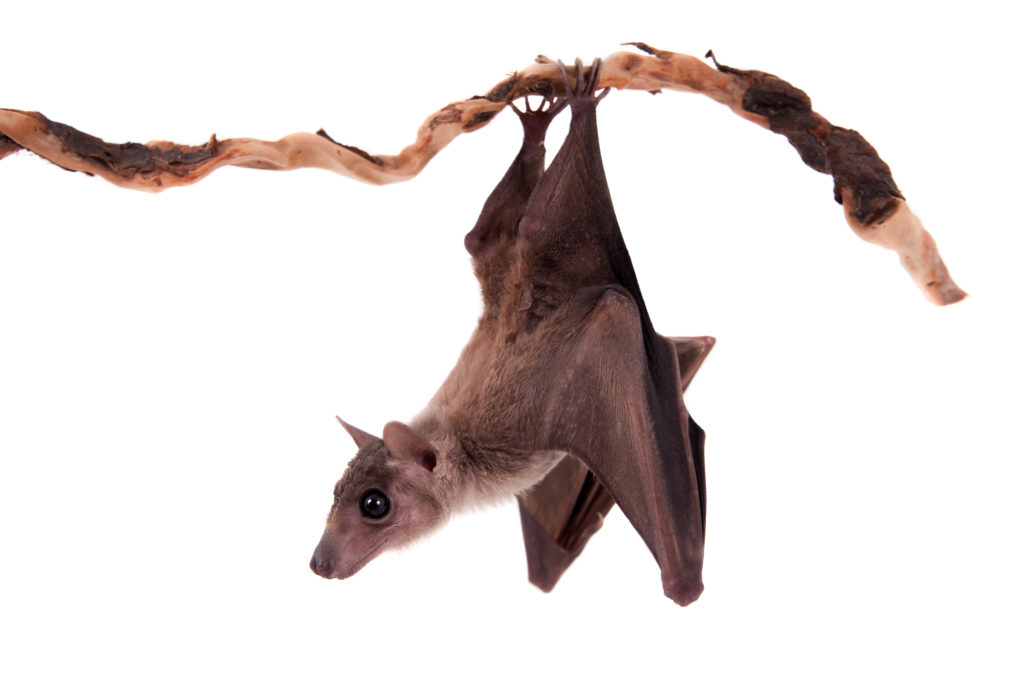Ebola virus (EBOV) and Marburg virus (MARV) are two closely-related viruses in the family Filoviridae. Filoviruses are often pathogenic, causing hemorrhagic fever disease in human hosts. The Ebola outbreak of 2014 caught the world by surprise by spreading so quickly and severely that public health organizations were unprepared. The devastating outcome was a total of over 11,000 deaths by the time the outbreak ended in 2016. Research that provides further understanding of filoviruses and their potential for transmission is important in preventing future outbreaks from occurring. But what if the outbreak comes from a virus we’ve never seen before?

All in the viral family
A recent study published in the journal Nature Microbiology provides evidence of a newly identified filovirus species. Using serum samples taken from bats, a well-known host for filoviruses, Yang et al. isolated and identified viral RNA for an unclassified viral genome sequence using next generation sequencing analysis. This new virus genome sequence was organized with the same open reading frames as other filoviruses, encoding for nucleoprotein (NP), viral protein 35 (VP35), VP40, glycoprotein (GP), VP30, VP24, and RNA-dependent RNA polymerase (L). This new genome sequence shared up to 54% of the nucleotide sequences for the filovirus species Lloviu virus (LLOV), EBOV and MARV, with MARV being the most similar. Their analysis suggested that this novel virus should be classified within the Filoviridae family tree as a separate genus, Dianlovirus, and was named Měnglà virus (MLAV).
Infected development
Given that filoviruses are associated with severe disease, the discovery of a new virus species raises questions about its potential to become the next big endemic threat. However, Yang et al. were unable to isolate live virus from the bat host, despite sequencing the viral genome. To study how Měnglà virus interacts with potential host cells, they used a vesicular stomatitis virus (VSV)-based pseudo-type system. To do this, they transfected HEK293 cells with a pCAGGS plasmid expressing glycoprotein for EBOV, MARV and MLAV with FuGENE 6 Transfection Reagent to create infectious “pseudovirions.”
Glycoprotein is important for host receptor binding, and filoviruses exploit the Niemann-Pick type C1 (NPC1) protein for binding and entry to the host cell. Therefore, the researchers created a NPC1-knockout HEK293 cells using CRISPR-Cas9 to confirm whether MLAV used this entry method for infection.
Transduction of viral genes into cells was measured with a firefly luciferase assay. The pseudovirions expressing EBOV, MARV and MLAV genes successfully infected HEK293 cells and had no effect on the NPC1-knockout HEK293 cells, demonstrating that Měnglà virus can infect cells using the same method as its viral cousins.
Keeping up with the contagions
Bats are suspected to be the primary natural reservoir for filoviruses, meaning they carry the virus but are not susceptible to disease. Yet, many of these viruses have mutated slightly to spillover into other host species, including monkeys and humans. To determine if MLAV has the potential to infect other species, the researchers introduced pseudovirions into various cell lines for several species of bats, monkeys, hamsters, dogs, and humans. The EBOV and MARV pseudovirions infected all cell types, as did MLAV, suggesting that this new virus has the potential for zoonotic transmission.
Will Měnglà virus become the next pandemic threat? It’s uncertain—and perhaps unlikely. However, this research and the continued discovery of new viruses will certainly help us better understand the diversity of these viruses, and can help assess their risks and impact on global public health.
Reference:
Yang XL et al. (2019) Characterization of a filovirus (Měnglà virus) from Rousettus bats in China. Nature Microbiology. Epub ahead of print. doi: 10.1038/s41564-018-0328-y.
Related Posts
Latest posts by Mariel Mohns (see all)
- Sustainability Makeover: Parking Ramp Edition - January 27, 2020
- Go with Your Gut: Understanding How the Microbiome and Diet Influence Health - November 26, 2019
- Kyle Hill Explains the Science of Star Wars at the Wisconsin Science Festival - October 23, 2019
